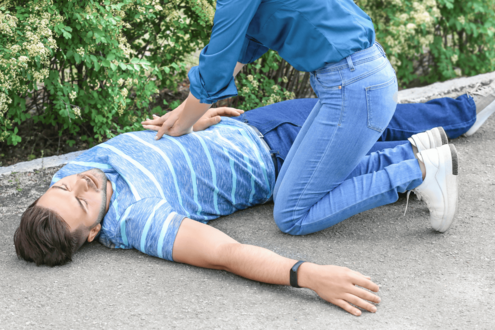
More than 357,000 out-of-hospital cardiac arrests (OHCA) occur annually in the U.S. While most of them happen in front of others, only about 40% of bystanders provide CPR. When performed immediately, CPR can increase chance of survival dramatically. Without action, OCHAs are far more deadly in adults and even more deadly in children compared to events that take place in the presence of medical professionals.
While there’s nothing you can do to save those already lost, there is something you can do to help others in the future: learn CPR.
The American Red Cross offers CPR training both online and in person. Click here to learn what options exist in your area. Or reach out to your local rescue squad to learn about upcoming training opportunities in your community.
VERMONT
Arlington Rescue Squad
Stamford Volunteer Fire Company
NEW YORK
MASSACHUSETTS
Village Ambulance Service (Williamstown)
It is natural to feel trepidation about starting CPR if you are not accustomed to doing it, due to concerns about causing harm. The risks of performing CPR are small compared to the irreversible damage that will most likely occur if it is delayed. Fortunately, CPR is safe, easy to learn and perform. The American Heart Association (AHA) encourages members of the public to learn Hands-Only CPR, which involves chest compression but no mouth-to-mouth contact.
Chest compressions are performed by using two hands to push hard and fast on a person’s chest at a rate of 100 to 120 compressions per minute. The pushing motion keeps blood flowing through the heart and extends the opportunity for a successful resuscitation once trained medical staff arrive on site.
To help people maintain the appropriate rhythm and perform CPR correctly, the AHA developed a playlist to achieve the right rhythm when performing compressions.
The National CPR Foundation notes there are two key considerations to make before attempting CPR on someone:
- Make sure you and the patient aren’t in any danger. If possible, resolve the risk or move the patient out of harm’s way. If you are unable to do so, call 911 immediately.
- Check the patient to determine if they are conscious or not. Do not check for a pulse because time is of the essence and finding a pulse can take too long. Instead, loudly ask the patient, “Are you okay?” Repeat if necessary. If the patient doesn't respond, immediately call 911 or have someone nearby call, then perform CPR immediately.
Remember, you don’t have to be a medical professional to save a life. You just need to be willing and able to take action when help is needed.
Adam Cohen, MD, is the director of Emergency Medicine and an Emergency Medicine physician at Southwestern Vermont Medical Center.